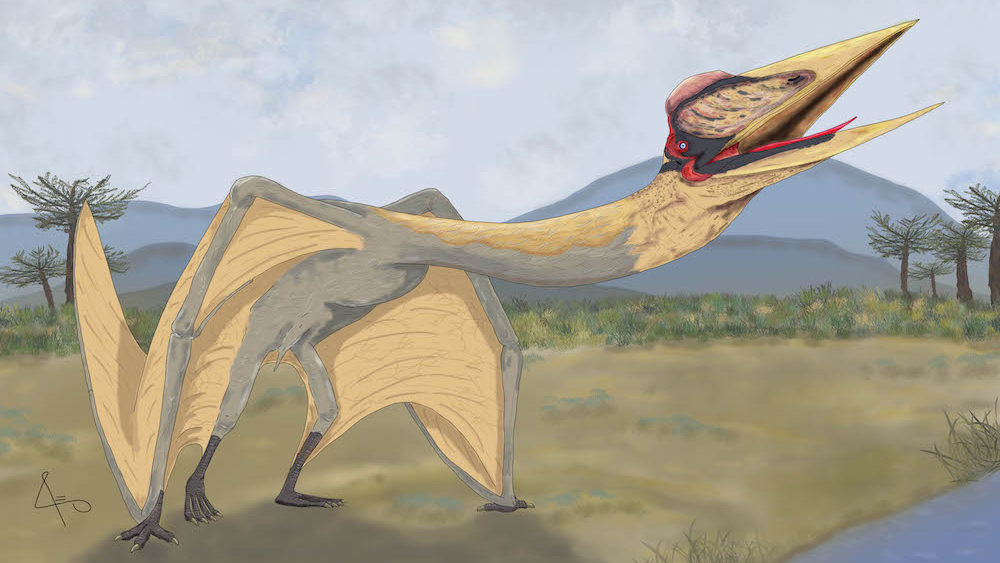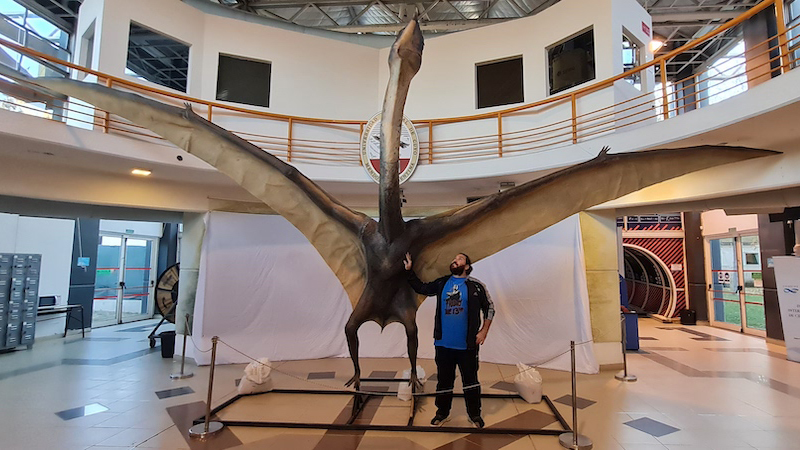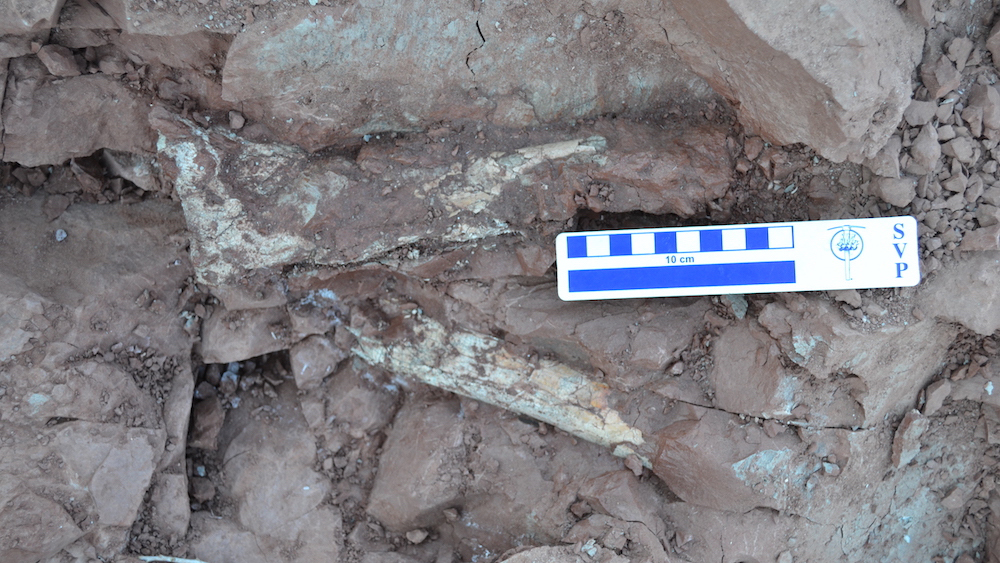Giant 'dragon of death' with 30-foot wingspan unearthed in Argentina
Thanatosdrakon is the largest pterosaur ever found in South America.

Researchers in Argentina have unearthed the largest pterosaur species ever found in South America. Dubbed "dragon of death" by paleontologists, two giant flying reptiles were discovered in the Plottier Formation, an outcrop located in the province of Mendoza.
The two specimens' wingspans measured approximately 23 feet (7 meters) wide and 30 feet (9 m) wide, respectively. Researchers confirmed that they are azhdarchids, a family of pterosaurs that lived during the end of the Cretaceous period (approximately 146 million to 66 million years ago).
"Azhdarchids were known for their very large skulls — sometimes larger than their bodies — as well as their hyper-elongated necks and short, robust bodies," Leonardo D. Ortiz David, lead author of a new study describing the enormous pterosaurs and coordinator general of Argentina's Laboratory and Museum of Dinosaurs in Mendoza, told Live Science in an email.
The scientists identified the pterosaurs as two individuals in the species Thanatosdrakon amaru. This is the sole species in the genus, which means "dragon of death," in Greek. The species name, "amaru," translates as "flying serpent" from the Indigenous Quechuan language and refers to Amaru, a two-headed Incan deity, the study authors reported.
Related: 'Real-life dragon' in Cretaceous Australia was huge, toothy and a 'savage' hunter
Researchers determined that the two pterosaurs died at the same time and that one was not yet fully grown. But the scientists can't say for sure if the two animals represent part of a family group.
"There is no indication in the fossil remains of a degree of parental relationship," Ortiz David said. "However, it can be confirmed that both specimens are of different sizes, and that the smaller one is a juvenile-subadult, and that they were together when they died more than 86 million years ago."
Sign up for the Live Science daily newsletter now
Get the world’s most fascinating discoveries delivered straight to your inbox.

The fossils were found during excavations for a civil construction project about 500 miles (800 kilometers) outside Mendoza's capital city (also named Mendoza). Ortiz David and his team were supervising the dig when they discovered fossil fragments within floodplain deposits. Mendoza, where Aconcagua, the highest mountain in the Americas, is also located, is well known among paleontologists for other important dinosaur discoveries, including that of the giant sauropod Notocolossus, one of the largest dinosaurs in the world, in 2016. (Ortiz David's research group made that discovery as well.)
"The [Thanatosdrakon] fossils were in different states of preservation; some of them were complete, such as both humeri [large arm bones], syncarpals [fused foot bones] and dorsal vertebrae," he said. "Others were fragmentary, including the phalanges [toe bones], ulna, radius [forearm bones], femur [upper leg bone] and pelvis."

Ortiz David said that the team's discovery of fossils in such good condition was surprising, because pterosaur bones are fragile, and fossils are usually found in tiny pieces.
"From the beginning, two facts caught our attention: The first was the size of the remains and their preservation in three dimensions, an unusual condition in this group of vertebrates; the second was the amount of remains found at the site, since large-giant pterosaurs are only known from fragmentary remains (with some exceptions)," he said. "The description of new specimens is always important for vertebrate paleontology, as they shed light on the different groups being studied. In this particular case, 3D elements of large pterosaurs are scarce, making Thanatosdrakon an excellent case study."
The fossils are currently housed in the Laboratory and Museum of Dinosaurs at the National University of Cuyo in Mendoza. To help preserve the specimens, museum experts made casts of the different fossils on a 1-to-1 scale; the casts are on display at the museum.
The researchers' findings will be published in the September 2022 issue of the journal Cretaceous Research.
Originally published on Live Science.
Jennifer Nalewicki is former Live Science staff writer and Salt Lake City-based journalist whose work has been featured in The New York Times, Smithsonian Magazine, Scientific American, Popular Mechanics and more. She covers several science topics from planet Earth to paleontology and archaeology to health and culture. Prior to freelancing, Jennifer held an Editor role at Time Inc. Jennifer has a bachelor's degree in Journalism from The University of Texas at Austin.









